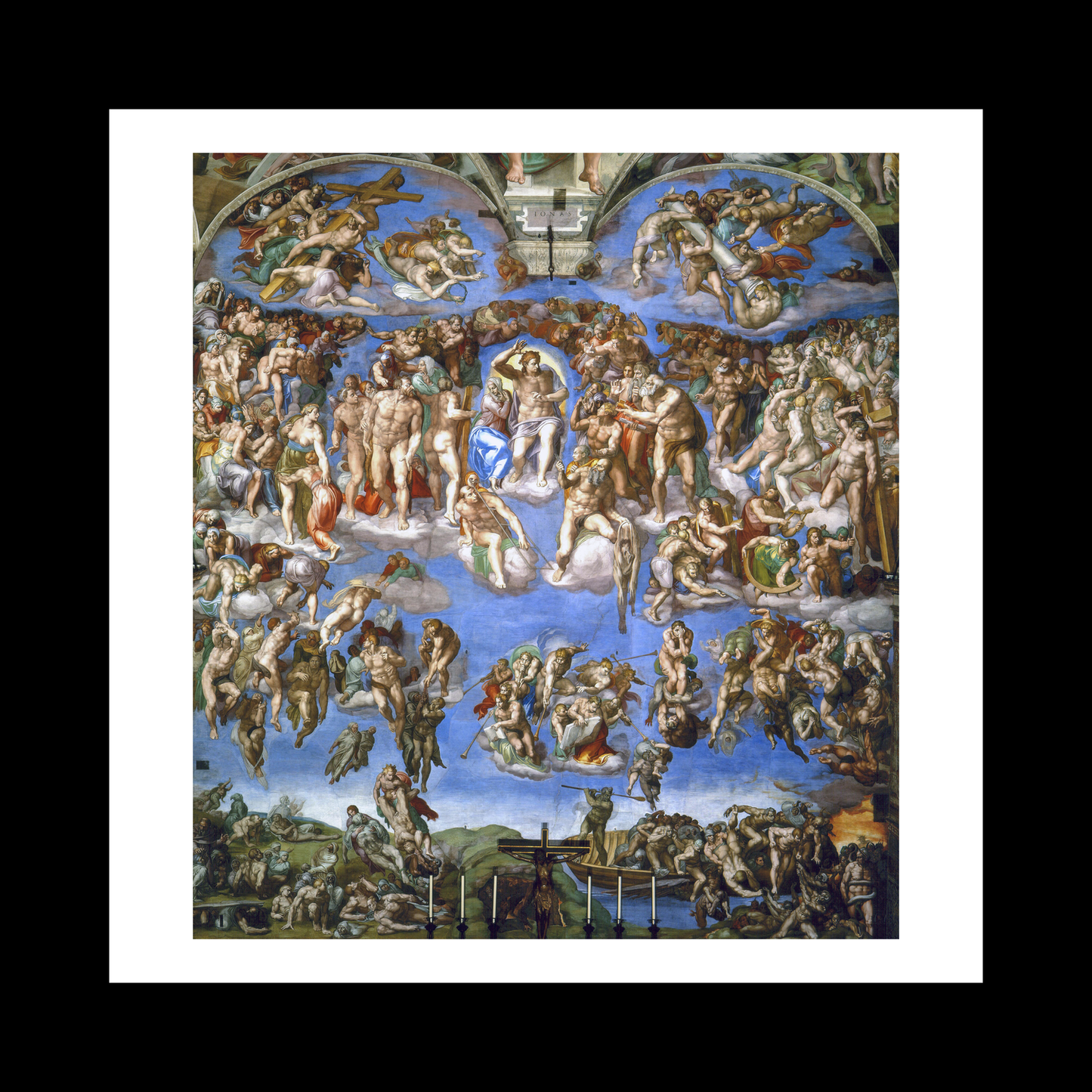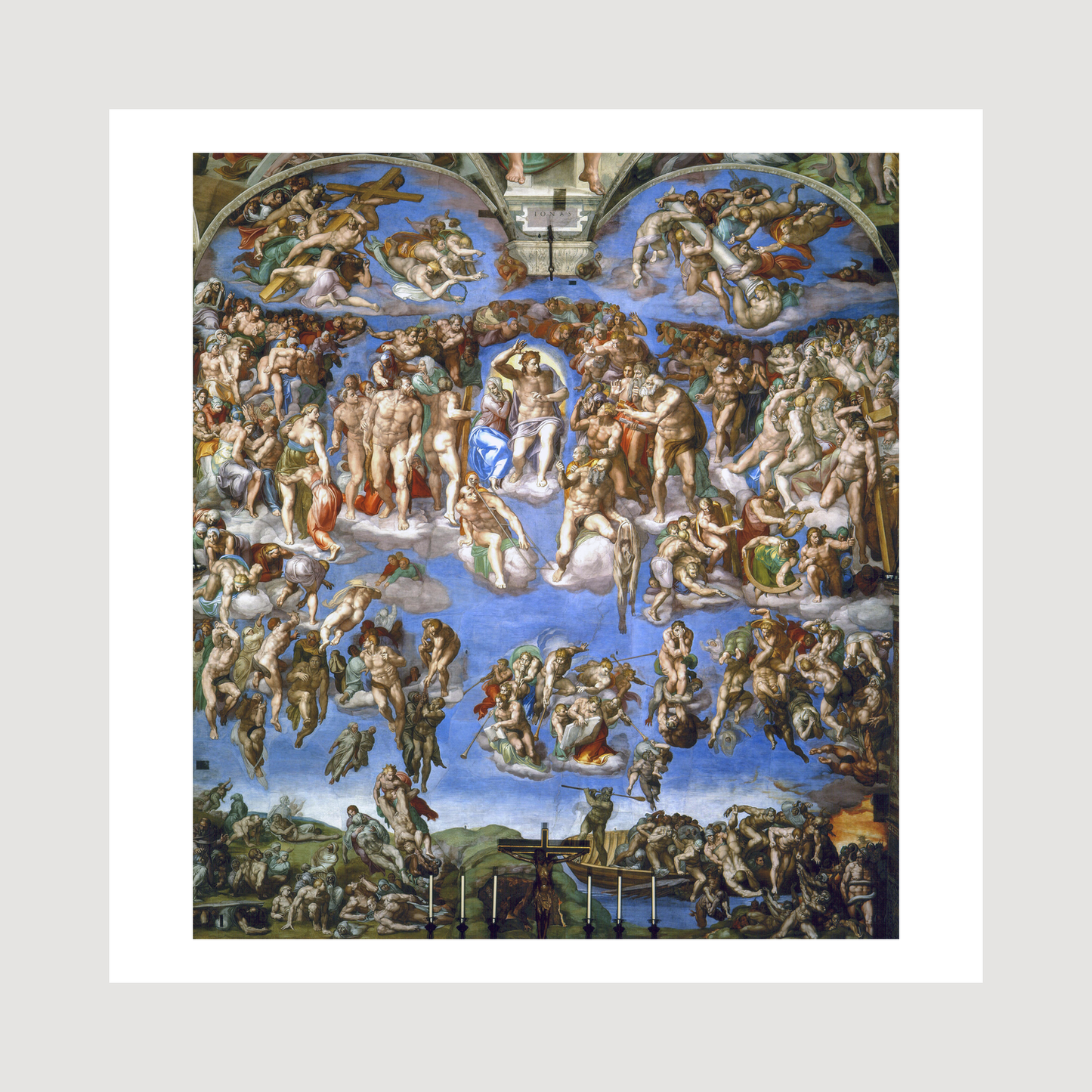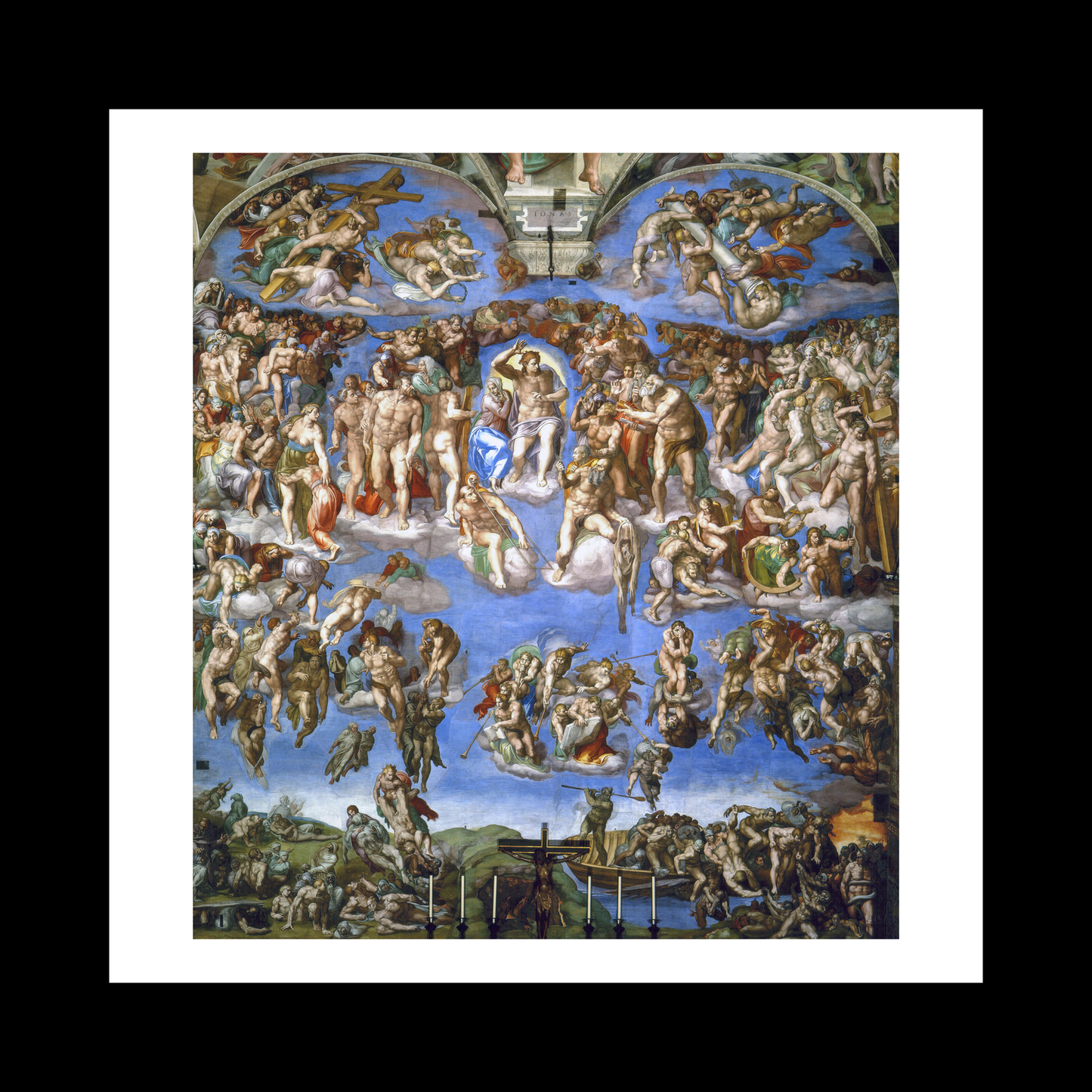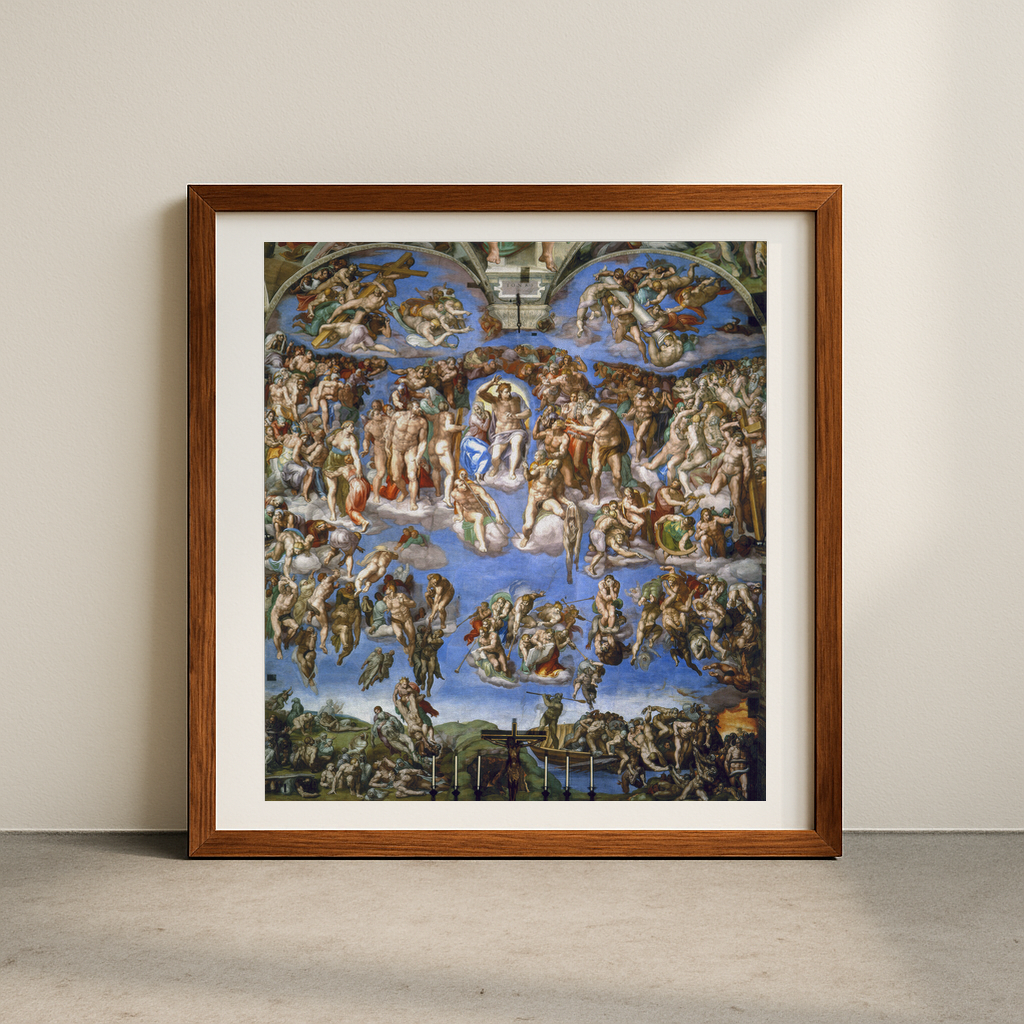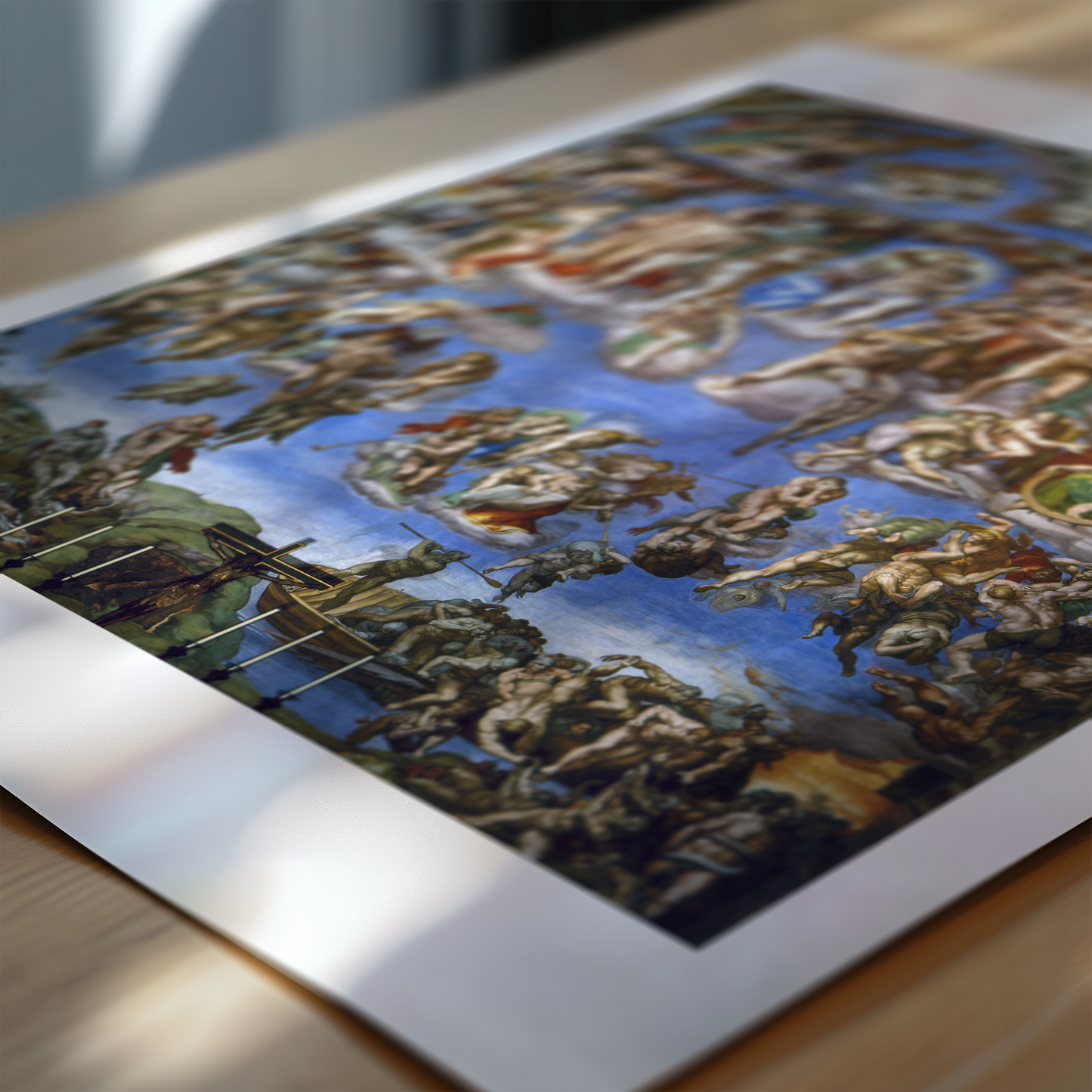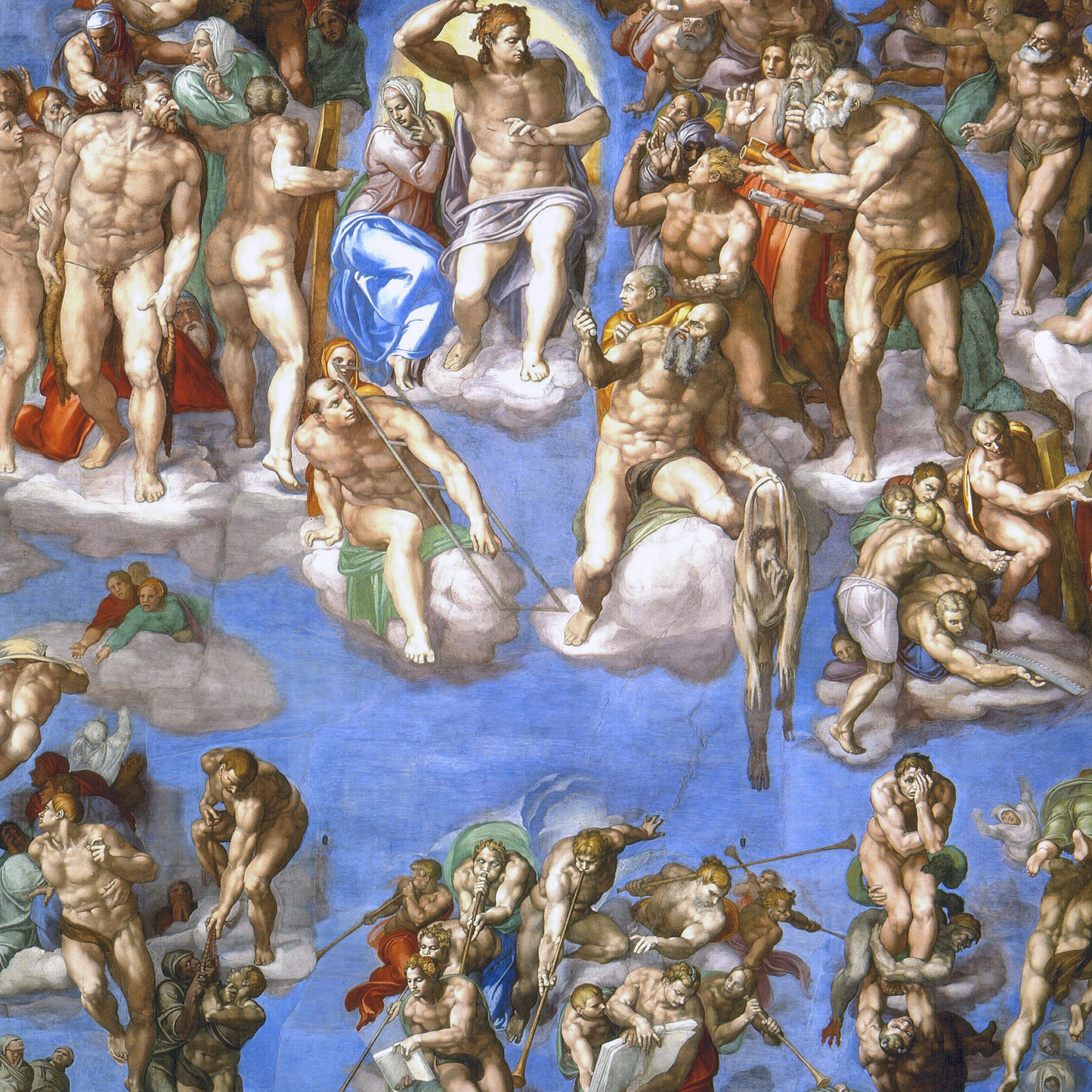1
/
of
6
The Last Judgment
The Last Judgment
Regular price
£12.45 GBP
Regular price
Sale price
£12.45 GBP
Taxes included.
Quantity
Couldn't load pickup availability
Michelangelo's The Last Judgment, adorning the Sistine Chapel's altar wall, stands as one of the Renaissance's most compelling frescoes. This monumental work, completed between 1536 and 1541, depicts over 300 figures swirling in a dramatic composition of salvation and damnation. At its centre, a muscular, beardless Christ orchestrates the final verdict of humanity, while souls ascend to heaven or descend to hell in a spiralling vortex of human forms.
The artist's technical brilliance shines through his unprecedented approach to the traditional subject matter. Breaking from medieval representations, Michelangelo painted dynamic, nude figures with extraordinary anatomical precision, showcasing his mastery of the human form. The work's intense blue backgrounds and bold colour palette marked a departure from his earlier Sistine Chapel ceiling, reflecting the artist's evolved style and the changing artistic sensibilities of the period.
Created during a time of religious upheaval, this fresco sparked considerable controversy. The abundance of nude figures drew criticism from contemporary religious figures, particularly Cardinal Carafa, who launched a "fig leaf campaign" to cover the more explicit elements. Michelangelo responded by painting his critic, Biagio da Cesena, into the work as Minos, judge of the underworld, with donkey ears and a snake biting his private parts. This bold statement reflects the artist's fierce independence and his complex relationship with religious authority, making the work not just a religious piece but also a deeply personal expression of artistic freedom.
The fresco also reveals Michelangelo's inner turmoil during its creation. Having witnessed the Sack of Rome in 1527 and experienced personal religious struggles, he infused the work with intense emotional depth. His self-portrait appears on the flayed skin held by St. Bartholomew, perhaps symbolising his own feelings of judgment and spiritual uncertainty.
View full details
The artist's technical brilliance shines through his unprecedented approach to the traditional subject matter. Breaking from medieval representations, Michelangelo painted dynamic, nude figures with extraordinary anatomical precision, showcasing his mastery of the human form. The work's intense blue backgrounds and bold colour palette marked a departure from his earlier Sistine Chapel ceiling, reflecting the artist's evolved style and the changing artistic sensibilities of the period.
Created during a time of religious upheaval, this fresco sparked considerable controversy. The abundance of nude figures drew criticism from contemporary religious figures, particularly Cardinal Carafa, who launched a "fig leaf campaign" to cover the more explicit elements. Michelangelo responded by painting his critic, Biagio da Cesena, into the work as Minos, judge of the underworld, with donkey ears and a snake biting his private parts. This bold statement reflects the artist's fierce independence and his complex relationship with religious authority, making the work not just a religious piece but also a deeply personal expression of artistic freedom.
The fresco also reveals Michelangelo's inner turmoil during its creation. Having witnessed the Sack of Rome in 1527 and experienced personal religious struggles, he infused the work with intense emotional depth. His self-portrait appears on the flayed skin held by St. Bartholomew, perhaps symbolising his own feelings of judgment and spiritual uncertainty.
